TR Interview: Bad Milo Director Jacob Vaughan Gets Anal
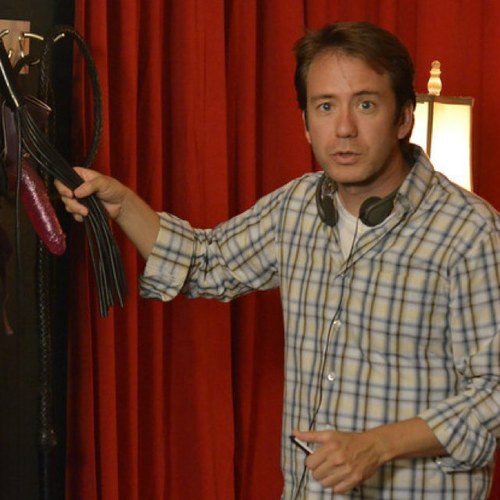 |
| Jacob Vaughan |
Jacob Vaughan’s primary career in Hollywood thus far has been that of editor for the Duplass brothers. But a creature from Ken Marino’s butt may change all that.
Bad Milo!, which debuted on VOD this past Friday and does theatrical dates starting October 4th, assembles an all-star comedic cast with the likes of Gillian Jacobs, Stephen Root, Patrick Warburton, Mary Kay Place, Toby Huss, Kumail Nanjiani and Peter Stormare, but it’s a rectal puppet who steals the show. Toothy, big-eyed Milo might be the most lovable thing to emerge from a shithole since NWA came straight out of Compton.
How did Vaughan and cowriter Benjamin Hayes come up with this unique tale of ass-ault and butchery? I spoke to Vaughan to find out.
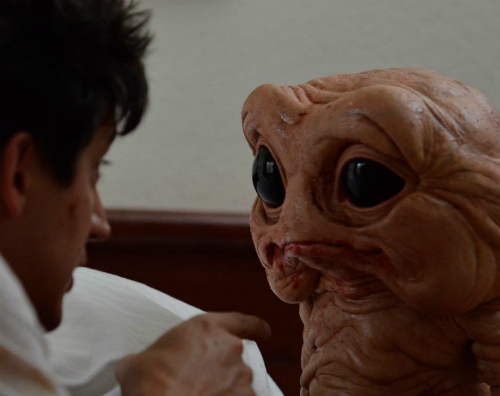 |
Luke Y. Thompson: You couldn’t have a movie more perfectly targeted to my readership.
Jacob Vaughan: Perfect, perfect! I love that. So how can I help?
LYT: Is there a deliberate sort of irony in that puppets usually have hands up their asses, but in this case, it’s the puppet up the ass of the guy?
JV: Yeah, you know, I thought of that while we were shooting. Yeah, the puppets always have humans up their asses, and now there’s a human with a puppet up his ass. And also, I don’t know if it came to mind, but when he’s doing the sock puppet therapy, I thought this was another way we were bringing puppets into the mix. But that’s an interesting point.
LYT: There’s the one outhouse scene where he shakes the excess shit off, but in general, was there ever a thought to making Milo “dirtier”?
JV: Yeah, yeah – I mean, certainly. There were things that I – I had made an early decision not to show Milo actually coming out of Duncan’s ass – not to show him crowning – just because I felt like this isn’t that movie. It’s not 100% gross out. There’s going to be plenty of gross out as it is, because all I have to do is sort of suggest the idea in people’s minds, and they go to the worst possible, they paint a picture of the worst possible thing. So I was trying, I deliberately held back a little bit on certain things. But, you know, there’s a side of me that really wants to play with Milo some more, make another movie, push him to the limit.
LYT: I’m torn between asking on the one hand how you got this idea, and on the other wondering why no one ever did before?
JV: I was surprised, too, when we thought of it. I was like, “Surely this has been done before?” And so I did some research, and I was like, “This HASN’T been done before?” I mean, it sort of has – I think there was a movie called Monsturd.
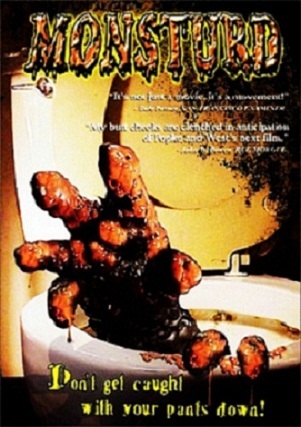 |
LYT: I was going to say that. Rectuma is about a killer ass.
JV: Yeah, yeah, exactly. I don’t know – I think it’s sort of been a little bit done, but not necessarily in this way, and it certainly hadn’t been done in a film that was out there in the world in a bigger production. This is a unique, niche genre, and there’s only a few of us in this corner of the room.
LYT: Was it literally just as spur of the moment as you painted it? Like, “Oh, hey, it should come out of the ass. Boom!”
JV: Yeah, it was like I blurted it out, and not even thinking beforehand – I just sort of blurted it out, and then I had to pause and think. “Wait a second – that actually might be really funny!” And then I thought about it for about 24 hours. I was weighing it in my mind, and thinking of scenes and thinking of ways to do it. It sort of downloaded fully formed into my brain, and it just seemed – it made me laugh, so I should do it. And that’s basically it. People say “Where do your ideas come from?” I have no idea. They come from the atmosphere.
LYT: Some of my readers, upon seeing what Milo looked like, made comparisons to Baby Sinclair from Dinosaurs.
JV: [chuckles]I’ve heard that. I had actually never – I remember the show, but I didn’t have him in mind at all. What I had in mind was, I gave Aaron Sims, the creature designer – I gave him reference pictures of intestinal linings, what it looks like inside your intestines, and I said “I want skin like this. I want him to be about this size. I kind of want him to be cute on one hand and fierce on the other hand.” He did a sketch – I also specified that one eye should be a little smaller than the other eye.
LYT: I didn’t notice that.
JV: Yeah. I said make him a little cute that way, and he did a sketch, and he nailed it, right off the bat. I thought it was great, and then he did a 3D rendering of it, and that was even better, and we used that to sell the movie – to pitch the movie, to sell the movie, and then we used that to build the model.
LYT: Did Drew Struzan do the poster, or was it just someone whose work looks a lot like him?
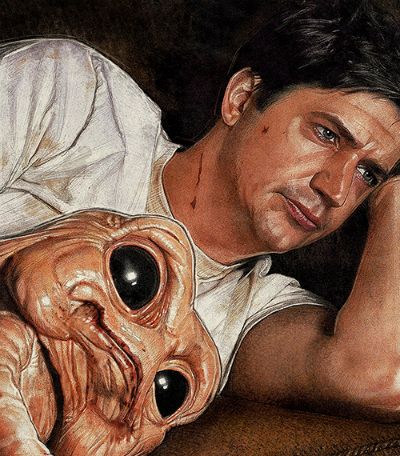 |
JV: No, that’s actually – Paul Shipper did the second poster, this is the second poster. The very first poster, the festival poster, was done by Mark Landry, and was also sort of inspired by Drew Struzan. They’re both sort of influenced by the posters of the ’80s, and if you look at the ’80s, Drew Struzan had a hand in drawing all of that stuff. So I think Mark and I sort of planted the seed that we wanted the poster to look a little retro in that way, and then when Magnet picked it up and they were designing a poster, they carried the torch further, and they made a poster in that vein.
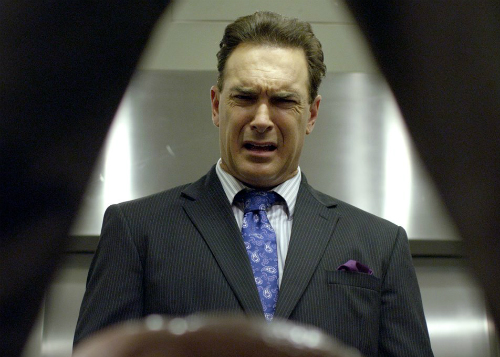 |
LYT: With all the great improv that was apparently going on, and obvious in the outtakes over the end credits, how hard was the post-production process on this, to pick the best moments?
JV: It was difficult, it was challenging. I come from a post-production world – from a post-production background – and it’s nothing in comparison to what I was doing on the Duplass movies. The main editor of the Duplass movies is Jay Deuby, and I was an additional editor, along with another guy. And the three of us would constantly build up scenes and break them down, build up and break them down, because their movies – they’re scripted, but then they totally will go off script, and will have all these jokes and all these takes, and each take is 15 minutes.
So I come from that background of having tons of material, and then really designing the movie, building the movie, rewriting the movie, in post. So mine wasn’t as extreme as that. I reined it in just a little bit. But yea, the choices of which joke to use – we did it, we shot the film, and we’d get takes in various different ways, and we’d try different things so we’d have options in the editing. So definitely, there are some jokes that are on the cutting room floor that I really miss, but we just didn’t have room for them.
LYT: Milo was obviously completely practical, but is there digital erasing of rods and stuff, or is it just really cleverly hidden puppeteers? Like, the best sort of Muppet tricks?
JV: Well, I’ll ask you – what does it look like? What does that mean? I’m curious what you think.
LYT: I can’t imagine where you would have hidden the puppeteers, but then I felt that about Kermit riding the bike in The Great Muppet Caper, too.
JV: [laughs]Yeah, it’s funny, because what we’re using, what we’re doing is we’re using new technology and old technology. So the old technology is a rod puppet. The new technology is taking the puppeteer out of the frame. So in every shot that there is Milo, in the original footage there is a guy dressed in black manipulating the rods and holding him up and moving him around. What we did is we painted that guy out. We shot a plate, so whenever we had Milo in the frame, we’d shoot an additional shot with Milo out of the frame, and everybody out of the frame, and we’d replace the background. So, basically, we rotoscoped out the puppeteer.
LYT: I was curious, technically: why black, as opposed to the more traditional blue or green?
JV: We thought about that. The CG guys, our post guys, said that black would be better, because if we had green or blue, we’d spill a lot of green or blue on various objects in the room, including Milo, and we didn’t want that. And really all that was necessary was black, because we weren’t going to do a key. We were just going to hand-draw around Milo and take the puppeteers out. Again, it was a balance of old and new, and the only other digital thing that we did was we added eye blinks. The eye blinks are CG, but everything else is practical.
LYT: I thought about that because there was recently all this controversy that George Lucas made the Ewoks blink on the last Blu-ray, for the first time.
JV: Oh my god, really? That’s funny. I didn’t know that.
LYT: Yeah, because he had never been able to do that before, and I guess it mattered.
JV: Yeah, yeah. Well, I’m glad that you asked that question, because I think for people who love the old creature effects in movies, those puppets – they don’t move around perfectly – they’re not perfect CG creatures. They make mistakes; puppeteers are human. It has a very organic feel, and I really love that. I really love that it’s not ‘perfect.’ I think that’s how movies used to be made, and there’s a beauty to that.
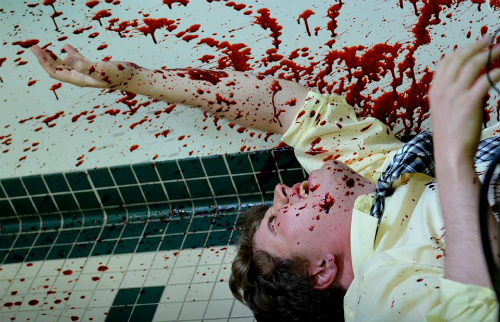 |
LYT: Moving on from here, is your next project going to be directorial or are you going to stay doing editing? Is there anything lined up on the horizon for you after this?
JV: Yeah, definitely directing is where I want to stay. I’m working on an action comedy right now. I’m working on a drama script. I’m working on a historical script, and I’m working on a lot of different things right now, and I’ve got a few other crazy, sort of Milo-esque ideas. I want to make a sequel – I have a sequel of Milo that I want to make, but I also have some other genre stuff that I want to make. So I’m trying to develop a lot of different projects right now, and read scripts and see what comes to the fore – see what comes to the top.
LYT: Do you know what the benchmark is for how well this has to do in order to green light a sequel?
JV: I have no idea. [laughs]I have no idea! I think a lot of people have to like it and tweet about it, and it has to do well – money-wise, it has to do well, so we’ll see.
LYT: Well, you had us at “ass demon!”
JV: [laughs]Thanks!
—
Bad Milo! is now available on VOD and opens theatrically October 4th. We previously interviewed star Ken Marino.
